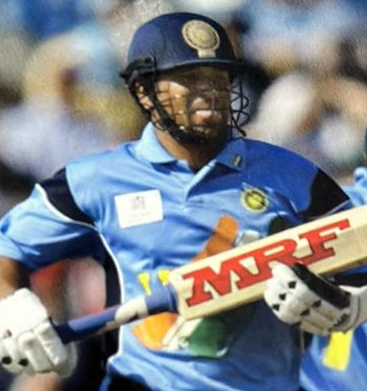
England versus India at Durban on February 26, 2003 will always be remembered for two fascinating sub-plots. The first was Ashis Nehra’s match-winning spell of 6-23, perhaps the best he ever bowled in his career. The second was Sachin Tendulkar against Andrew Caddick. Caddick-Sachin had started on the 2002 tour of England and the 2003 World Cup was a continuation of the evolving rivalry. Ahead of the tournament, Caddick had said a few things about Sachin and while the master claimed he had no idea of what was said or reported, word did go to him that the things said weren’t really charitable. As a result, the build-up to the England game at Durban on February 26 was something else.
While England-India is always a big game, in the 2003 World Cup, it was a must-win game for both teams, which made it an ever bigger occasion. In Sachin’s words, as described in his autobiography, “Apparently, Andrew Caddick said a number of things before the game and our players who read those statements were fired up on the eve of the match. I had not read them and to this day don’t really know exactly what was said. I had scored runs in all three matches so far and was simply looking forward to another opportunity.”
On occasions like this, the start is always critical. The battle is half won in the first hour itself and Sachin was acutely aware of what he needed to do. Also, the team was hugely dependent on him to set the tone and a failure could cost India dear. Failure, frankly, wasn’t an option. To go back to Sachin, “We won a very important toss and decided to bat first. Batting under lights at Durban is always a challenge and winning the toss had given us the early advantage. I felt determined as I walked out with Sehwag, and we got off to a flier, passing 50 in no time. Durban always offers something for the fast bowlers and I knew that Caddick would want to exploit the bounce by bowling short of a length. I was ready for the short ball and it finally came in the ninth over of the innings when Caddick bowled one a foot and a half outside the off stump. It was exactly what I was waiting for and I swiveled back and hit him over midwicket for six. The moment the ball hit my bat, I knew it was going the distance.”
While he says it in a very matter-of-fact way, the truth is for those watching, it was a statement. Every movement of Sachin’s was a template for brilliance. From the swivel to the slight shake of the head to the commentary, which added to the stroke, that one instant gave India a huge psychological edge. The ball went high and handsome and, Tendulkar had landed the first telling blow. The stroke is still available to watch on Youtube and if any of the readers do so, please do observe Sachin’s body language just as he completes the shot. The truth was that he knew. He was aware he had got it right and was also conscious that he had won the first round in the three-round boxing match. But then for Sachin, this wasn’t the shot he loved the most.
“In his next over, I played my best shot of the World Cup. I was hoping Caddick would over-compensate and bowl a fuller delivery, which he did. It wasn’t a bad ball but I managed to play an off-drive on the up, bisecting mid-off and the bowler for four. The timing and impact felt wonderful. I hit two more boundaries in the same over and we raced to 75 off just eleven overs. It was a dream start in a very big game,” Tendulkar says in Playing it My Way.
It was this innings against England in 2003 that defined Sachin as a batter and started India’s resurgence in the competition. Taking down Caddick was not just a win in a very important personal duel, it was also an indication of what Tendulkar was capable of as a batter for India. Eight straight wins to get to the final stand testimony. He was the best by a distance, and the two shots off Caddick will forever define his genius.




